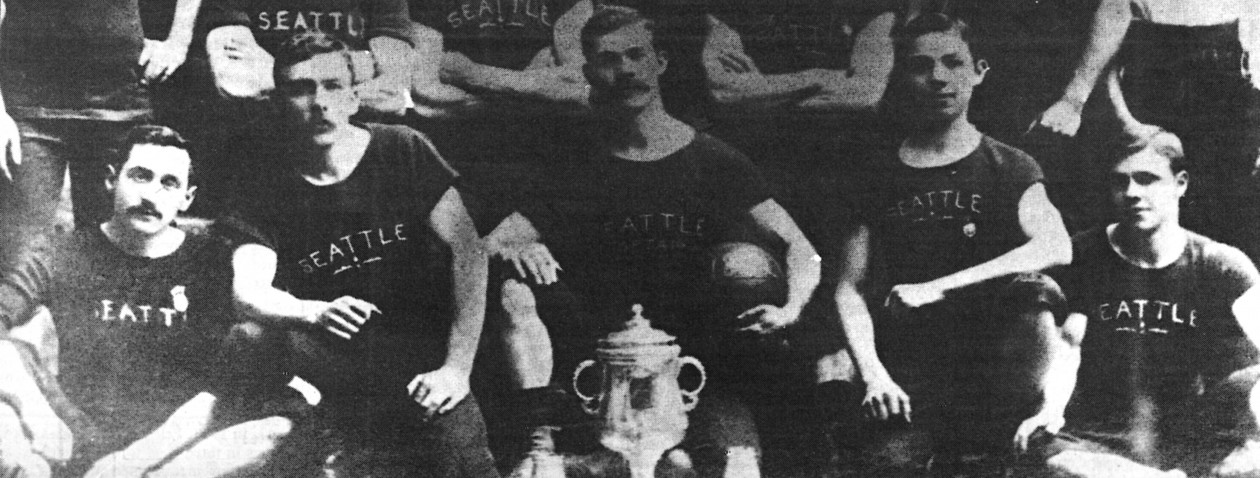It was a big game, for sure. A chance for the Little School by the Canal to once again burnish its image as a collegiate soccer upstart. Oh, yeah, and have witnesses coast-to-coast.
Such was the set-up 40 years ago, when Seattle Pacific met Southern Illinois-Edwardsville in the second game of the 1979 season. The Falcons were defending NCAA Division II champion and SIUE arrived in Seattle ranked No. 4 in all the land, having reached the Div. I quarterfinals the previous season. And a new cable network, hungry for live content, saw fit to televise it.

The yellowed newspaper clippings reference the Entertainment and Sports Programming Network. Before long, it would become known by its acronym, ESPN.
“We were told, and we believe it was the first soccer game televised by ESPN,” says Cliff McCrath, the legendary SPU coach. ESPN had only been on the air for four days by September 11. Cable TV was relatively new and not available in many neighborhoods in Seattle, so in some ways the broadcast was no big deal at the time.
Only 20 million U.S. homes had cable at the time, and just 1 million carried ESPN. In Puget Sound, Viacom and Teleprompter cable systems served 73,000 homes, though not all had – or were aware that they had – the new all-sports station whose first live game broadcast was from the Slow-Pitch Softball World Series.

It was the third game of the SportsWest Husky Classic. Yes, the University of Washington was hosting the broadcast yet not involved in the marquee matchup. Instead it was SPU and SIUE, both featuring celebrity coaches.
McCrath was only nine months removed from crawling over Queen Anne Hill to celebrate the Falcons’ upset of Alabama A&M in the D2 final. His feat made more headlines than the game itself, with stories, photos and film clips getting national mention. Bob Guelker, the SIUE coach, had already won five NCAA titles as coach of St. Louis University, and he would be inducted into the National Soccer Hall of Fame in 1980. Only Guelker, having recently undergone heart bypass surgery, was questionable to attend the tournament (He did, but his assistant had taken the reins).

Husky Stadium was far from the ideal setting. Only on rare occasions had more than 2,000 fans come to watch in the then-55,000-seat venue. The Astroturf field was narrow, crowned and separated from the stands by a track and a moat. The lighting was not ready for primetime TV (Husky football had yet to play a night home game).
Announcing the match was a fresh-faced new-hire, a 24-year-old recent graduate of Seton Hall by the name of Bob Ley. His analyst: Sounders captain Mike England.

“They positioned themselves about 15 rows up from the benches, on the south side,” recalls McCrath. “Bob came down to talk before the start, and I remember him saying this would be a good learning experience for our team.” The inference: A little D2 team had little chance against a D1 power.
But this was live, unscripted television. Yes, SIUE featured several future pros, Hermann trophy candidate and U.S. Olympic Team captain Don Ebert among them. On the tournament’s first night, the Cougars routed Washington, 6-0. Still, Seattle Pacific was no pushover. It had shocked foes before, and nine of the opponents on its schedule were D1s. What’s more the Falcons were ranked 14th among all schools, so they didn’t come without credentials.
“Their win over U-Dub worked in our favor,” says Mark Metzger, an SPU midfielder. “They came in really cocky.”
The match started at 8 p.m., 11 o’clock Eastern, on a Tuesday. It’s estimated that the first SportsCenter, airing on Sept. 7, had an audience of 30,000. This game was being shown on the coattails of SC, and viewers didn’t wait long to see goals.

Inside Husky Stadium, Metzger and Mike Smith soon had the fans on their feet. They shocked SIUE with two goals in the first 35 minutes. In the second half, SPU keeper Sergio Soriano made six saves to thwart a Cougars comeback. When Ebert was sent-off in the 78th minute, the upset was all but assured. Final score: Seattle Pacific 2, SIU Edwardsville 1.
Only when reached for comment in this story was Metzger made aware that the game had been televised. “I don’t think anybody on our team knew it was being televised,” he professes, adding that he was known to scour newspapers for nuggets of soccer and general sports information. “We didn’t have cable.”
It was a huge win for SPU, and the outcome would only gain stature with time. SIUE, following a road loss to No. 1 San Francisco the following week, proceeded to go undefeated in its final 20 games to claim the NCAA championship. SPU won 15 more games, advancing to the D2 semifinal which, coincidentally, was also aired by ESPN.
Videotapes were shared postgame but unfortunately have not survived over time. Neither McCrath nor ESPN archived copies.
“Back then, no one even knew what ESPN stood for,” remarks McCrath. “Few of us even had cable. But I remember viewing the tape because of the red card to Ebert.”
Of course, ESPN has just marked 40 years as an American institution. To many, Ley became the face of the network; he retired this past summer (Mike England, incidentally, would retire and be named Wales National team manager six months after the game).
Within five years of its debut, ESPN would be purchased by ABC. It is now in most living rooms across the U.S. and 61 countries worldwide. It has televised every season of MLS and eight FIFA World Cups. But back in 1979 ESPN televised Seattle Pacific soccer. Because it had to start somewhere.

